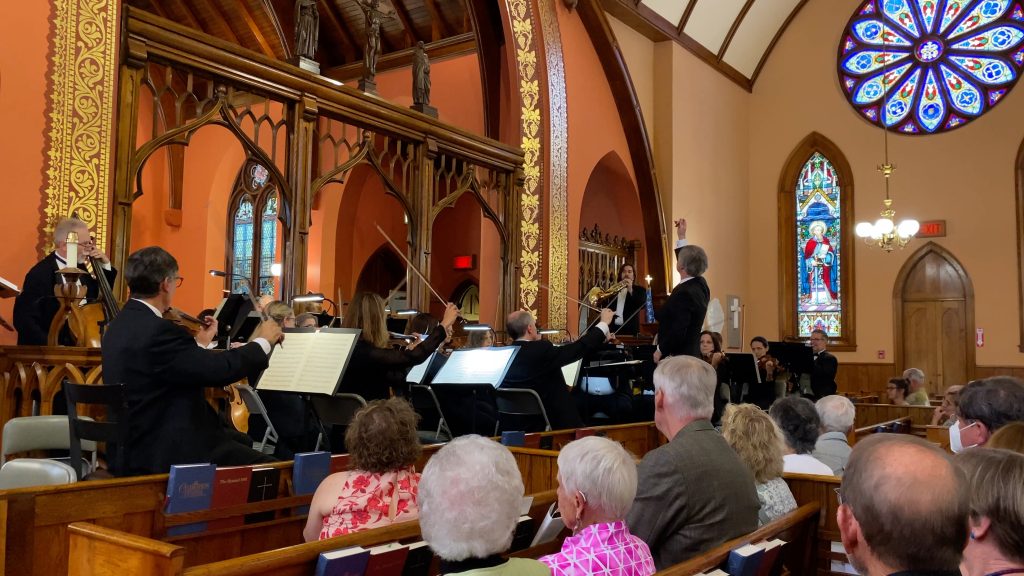
First Impressions by T. Stephen Wager
Fenimore Chamber Orchestra Begins Concert Season in Style
The beauty of a mid-summer afternoon beneath dreamy azure skies was the scene for the opening concert of the season by Fenimore Chamber Orchestra. The musical selections inside Christ Church in Cooperstown worked fully in tandem with the gorgeous weather outside. Maestro Maciej Żołtowski began the concert with the overture to Haydn’s “Armida,” another rarity offered as part of what is already an expected practice by this very stylish orchestra. Considered to be Haydn’s finest opera, “Armida” enjoyed a very brief revival in the early 1980s, when the artists appeared sur scène to do proper vocal and dramatic justice to the opera. Since then, the overture has enjoyed something of a life of its own with connoisseurs. The overture is in three parts and generally adheres to the principle of sonata form. The performance showed from the beginning a faultless legato as well as fleetness and virtuosic playing, not only from the strings but the winds as well, in the extremely demanding third part, perhaps foretelling of Armida’s decent into the underworld at the end of the opera. One could certainly believe so, listening to this performance!
Mozart’s Concerto for Horn No. 4 was eagerly anticipated by those in the know. The work is, indeed, very merry, at least in the outer movements. Steven Harmon is principal horn of Fenimore Chamber Orchestra, and his playing breathtakingly put on display the quality of artists that make up the orchestra. In the very difficult outer movements, in terms of florid display, Harmon transported the audience with an almost insouciant demonstration of technique; never revealed as an end in itself. The central movement brought a soothing and unfailing legato from Harmon, not something easy to achieve on the French horn. The audience rewarded him with three solo bows, a presentation bouquet and, as reward, the audience received an encore. Given his obvious young age, it must only be a matter of time before some major orchestra snatches him from our midst. For now, we must be grateful for his appearance.
The major offering of the afternoon was another comparative rarity, this time from Franz Schubert. The Symphony No. 5 is a genial and thoroughly refreshing work of art that astonishingly vanished from the repertoire for 50 years after its first performance only to be rediscovered by, of all people, Sir Arthur Sullivan! The opening theme of the first movement alone allows one to take a deep breath and relax into the glorious world of Schubert’s melodic genius. Maestro Żołtowski and members of the orchestra brought a strength, imagination and commitment to this work that could help restore the work to the repertoire. Frankly, this performance revived the greatest Schubertian performances and traditions of the past and brings to mind the ineffable achievements of Günther Wand, Wilhelm Furtwängler and Sir John Barbirolli, all of whom championed the work on many occasions.
This afternoon could be considered the greatest performance so far by Fenimore Chamber Orchestra, which seems to have crossed a Rubicon in terms of true and focused traditions, orchestral sound, and style. Difficult to live up to, certainly, but one that can help maintain the expectations of the concert going public. This certainly is the result of the exceedingly high quality of the musical artists involved, but most importantly the masterly nurturing of Maestro Żołtowski.
People filed out of the church and were treated to freshly baked cookies. And…there was that gloriously azure sky!


Truly a great card in a beautiful setting.